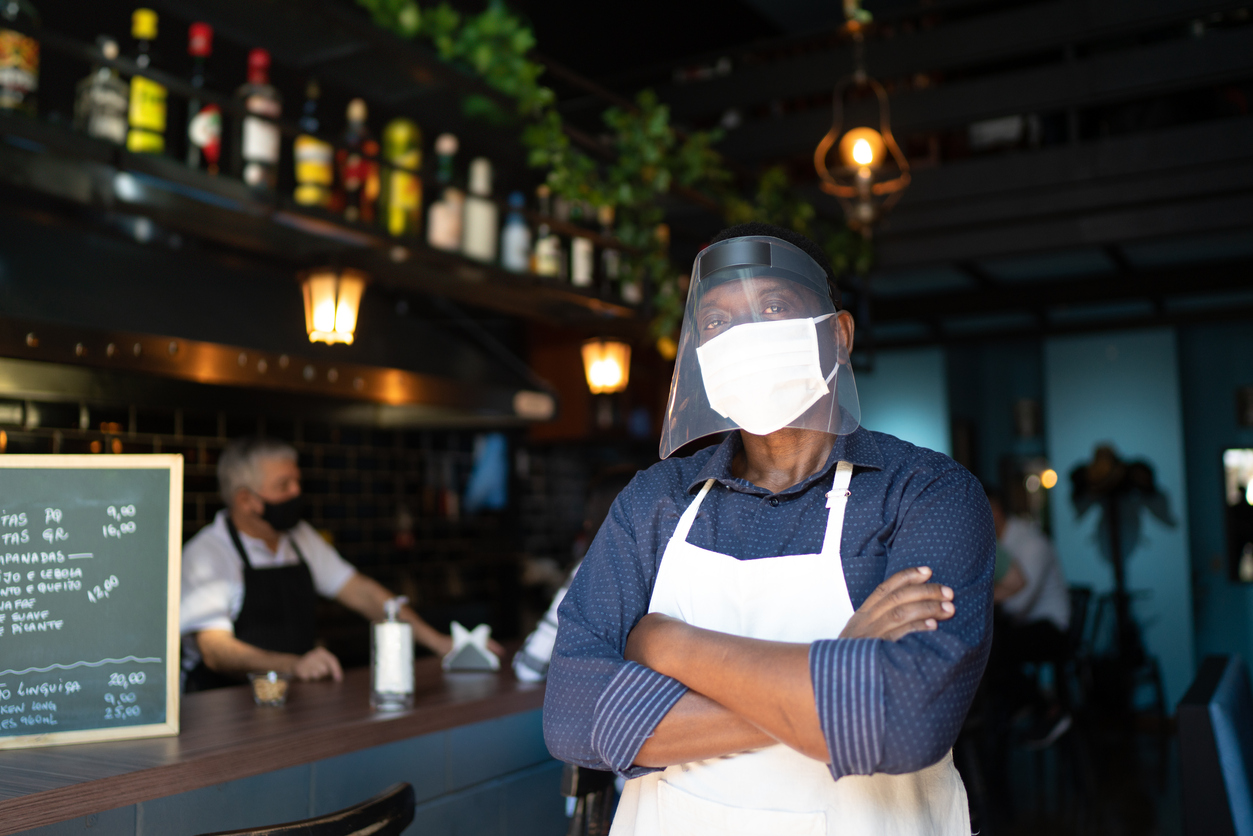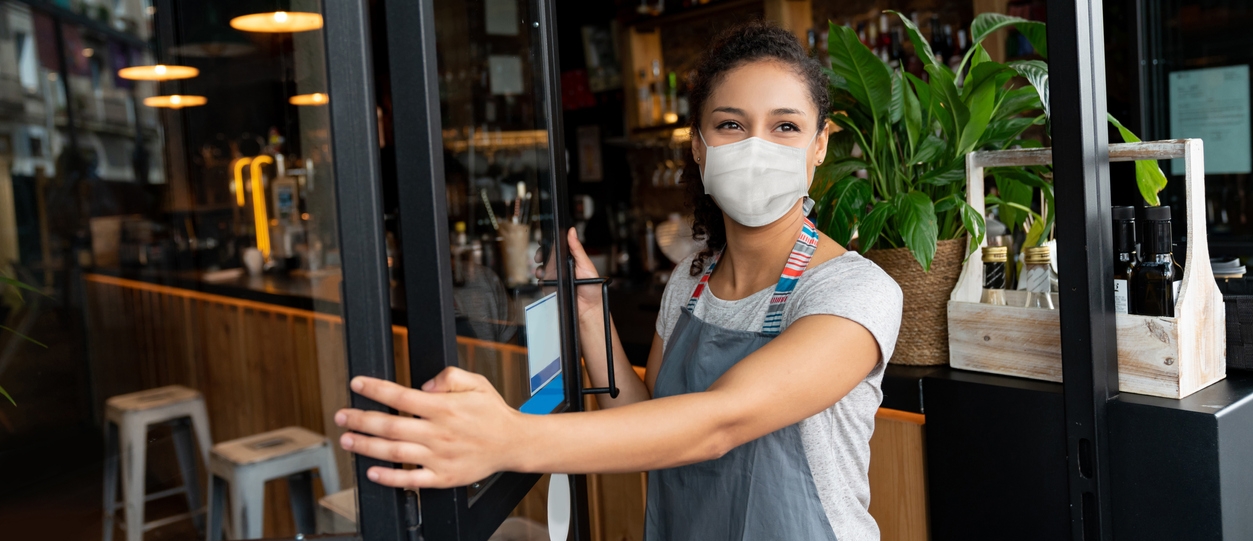COVID-19 has forced some crazy changes and adaptations upon the restaurant industry that will change the landscape well into 2021 and possibly well beyond.
COVID-19 has forced some crazy changes and adaptations upon the restaurant industry that will change the landscape well into 2021 and possibly well beyond.
The good news is that the pandemic proved yet again how resilient and innovative the restaurant industry is.
Restaurants will come out of this nightmare eventually, mainly because people have to eat and most don’t want to eat their own cooking all the time. People value eating food cooked by a professional especially when it’s executed and a high level and it’s of course, delicious. At the end of the day, it’s still all about the food and the experience and that isn’t going to change.
In 2021, restaurant operational systems, marketing strategy, aesthetics, and technologies—for independents and chains alike—will continue to evolve, and what was once new and necessary, will become commonplace.
Here’s a look at some trends to keep an eye on as we move forward:
1. Healthy Chains Will Replace Closed Independent Restaurants.
Unfortunately, chain restaurants will rule the day, at least for a while. Another sad and unfortunate trend will be the increase in independent restaurant closures and the subsequent increase in the number of chain restaurants. If 10-15 percent of independent restaurants permanently close during the pandemic, which is what is predicted, the healthy chains will become dominant. Chains will have the means to increase unit growth to fill the void left by those vacant locations.
Now on the positive side, there will be a number of new independents that will arise out of the ashes and many in this new wave of restaurateurs will learn and thrive from the recent crisis. They will need to focus on sustainability of operations by leaning hard into delivery, take-home, curbside pick-up, contactless payment, and other enabling technology that will become the “new normal”.
2. Marketing Strategy Will Need to Evolve and Adapt.
Messaging has and will become increasingly important in the near and distant future. More personal and more frequent communication will continue to be a critical part of that strategy. The pandemic has shown that restauranteurs communicating directly with customers helps keep a restaurant top of mind in good times as well as bad. And relationships are a big part of what makes a restaurant special. The best hospitality pros understand how to create an immediate connection with diners, even if their visit is just a one-off event. With these in-person points of contact limited this past year, restaurants have had to come up with other ways to facilitate those relationships. Often, that shift has meant more virtual togetherness. All restauranteurs will need to understand their customer and know their journey better than ever before.
For Chef Elizabeth Blau, of Honey Salt restaurant in Las Vegas, maintaining customer loyalty has been a top priority throughout the pandemic. “Even when our dining room was closed, we remained in constant communication with our customers through weekly email newsletters and social media,” she says.
Operators will need to continue to think locally. Independent restaurants and chains alike will have to make the management of local marketing channels a priority, through email, social media and ultimately face to face communication.
3. Safety and Sanitation will be more important than before
Long after the vaccines have made their way to us all and things are starting to back to normal, heightened cleanliness will be critical to those potential customers who may still be in fear. Serve Safe and other entities that train restaurant employees to prepare and handle food will proliferate, and the constant disinfecting of communal surfaces, such as counters, door handles, tables, chairs, and condiment containers, will be expected.
4. Restaurateurs will fully embrace digital ordering.
Every restaurant, independent or chain, will provide as many e-commerce channels for guests to order food as possible to create a contactless experience. Wing Stop, Domino’s, Papa John’s, and Chipotle are doing well during the pandemic because they were positioned to survive in a crisis. Restaurateurs will fail if they don’t learn to embrace digital orders and provide ways for customers to get the food where they want it and when they want it. Although consumers are getting used to ordering food digitally and internal and external delivery are expected, the trend may slow after the pandemic ends. Even so, the demand for delivery, take-out, meal kits and the like will continue.
5. Dining areas will shrink.
Because of the shift to off-premise dining, many new restaurants in all categories will reduce the footprint of their dining areas. Existing locations will most likely remove some tables and chairs to continue to allow for social distancing. Restaurant designs are beginning to lean more heavily into pick-up and curbside options versus on-premise dining even though the reliance on them will begin to diminish.
6. The growth of Ghost Kitchens will continue to flourish.
New and existing concepts will continue to develop ghost kitchens where multiple chefs and cuisines live together to satisfy the appetite of a wide demographic of diners. There will be an increased inventory of locations for these kitchens borne out of numerous restaurant closures.
7. Outdoor Dining
Outdoor dining took on incredible new importance in 2020, often being the lifeline for many restaurants. In places where indoor dining was off-limits for much of the year, restaurants and cities went to great lengths to create safe, comfortable atmospheres outdoors. Whether that meant adding heat lamps, creating “streeteries,” building partial enclosures, investing in seat warmers, or some combination, outdoor dining leveled up.
With these build-outs and improvements in place — which were a considerable investment for restaurants — comfortable, year-round outdoor dining will continue to please restaurant owners and diners alike, so long as city ordinances continue to allow it.
8. Contact-free payment
It may have existed prior to the pandemic, however, it moved slowly, and many restauranteurs did not buy-in. Needless to say, due to the events of 2020, many restaurants were forced to shift to more user-friendly online ordering and payment services to enable contactless transactions. Contact-free payment and menu solutions such as QR codes will be with us beyond the pandemic because of its ease for diners — both in the restaurant and for takeout. Prepaying for takeout and unique experiences and events are also likely here to stay.
9. Smaller, smarter menus
Restaurants have taken a very hard look at what works and what doesn’t in all aspects of the business. Menus have been scrutinized in terms of diner preferences, sales, labor costs, and food costs. Some places have found culling the number of menu items offered has been necessary to keep costs in check. The smaller, strategically designed menus will be a hallmark of post-pandemic dining.
Summary
These are just a handful of ways the restaurant industry has innovated during a difficult and unprecedented year. The challenges of 2020 showed the incredible grit and ingenuity of the restaurant community, who continually had to pivot to keep their businesses alive. Innovation and experimentation were more necessary than ever, so restaurants tried many new things, some that didn’t work and some that worked better than anyone expected. I believe diners have now become used to certain accommodations and conveniences they hadn’t had in the past, and most of those aren’t going anywhere.
This evolution of the industry is ongoing and we’re sure to see many more creative approaches throughout 2021 that will have a lasting and positive impact on the future of dining out.




